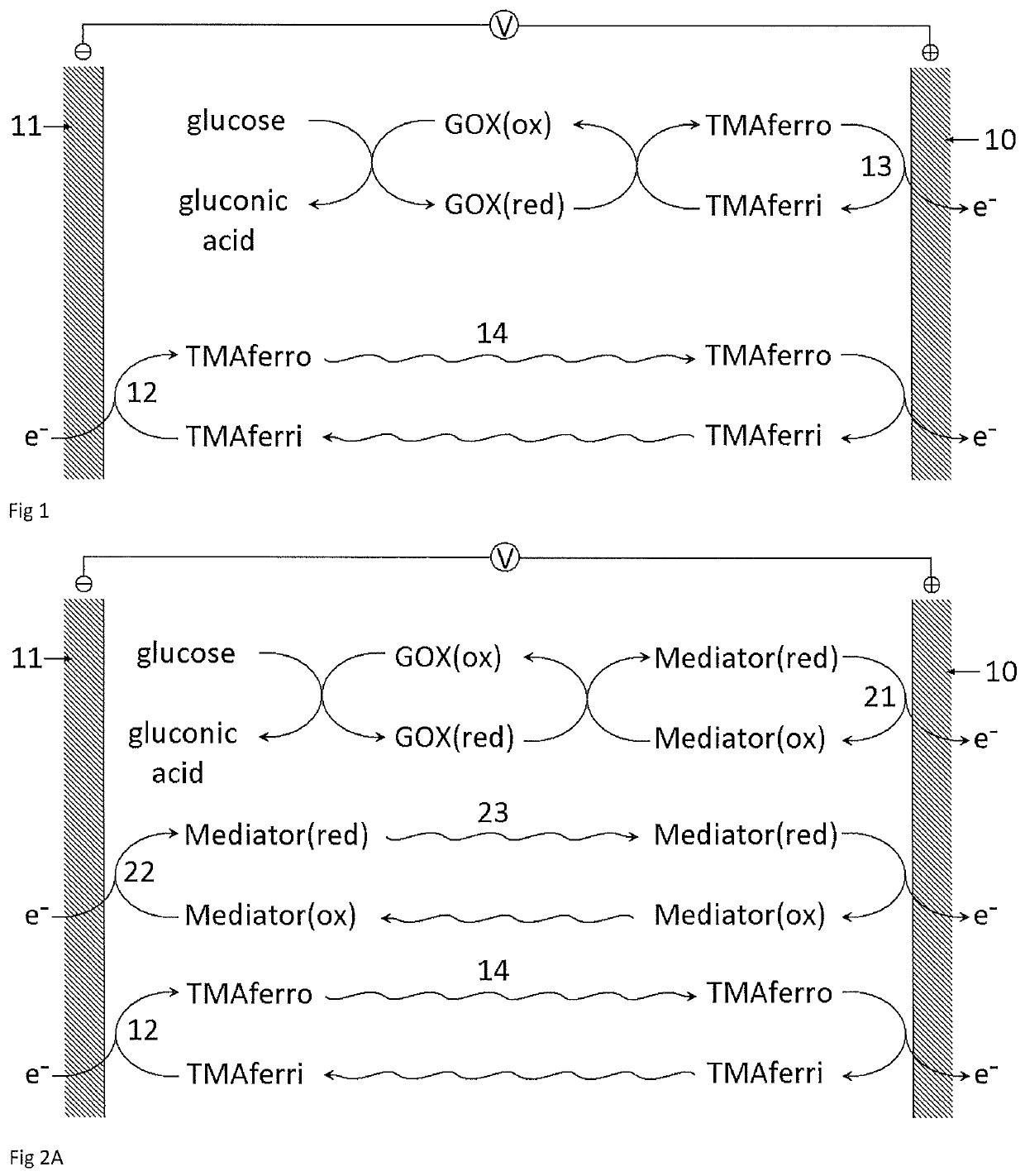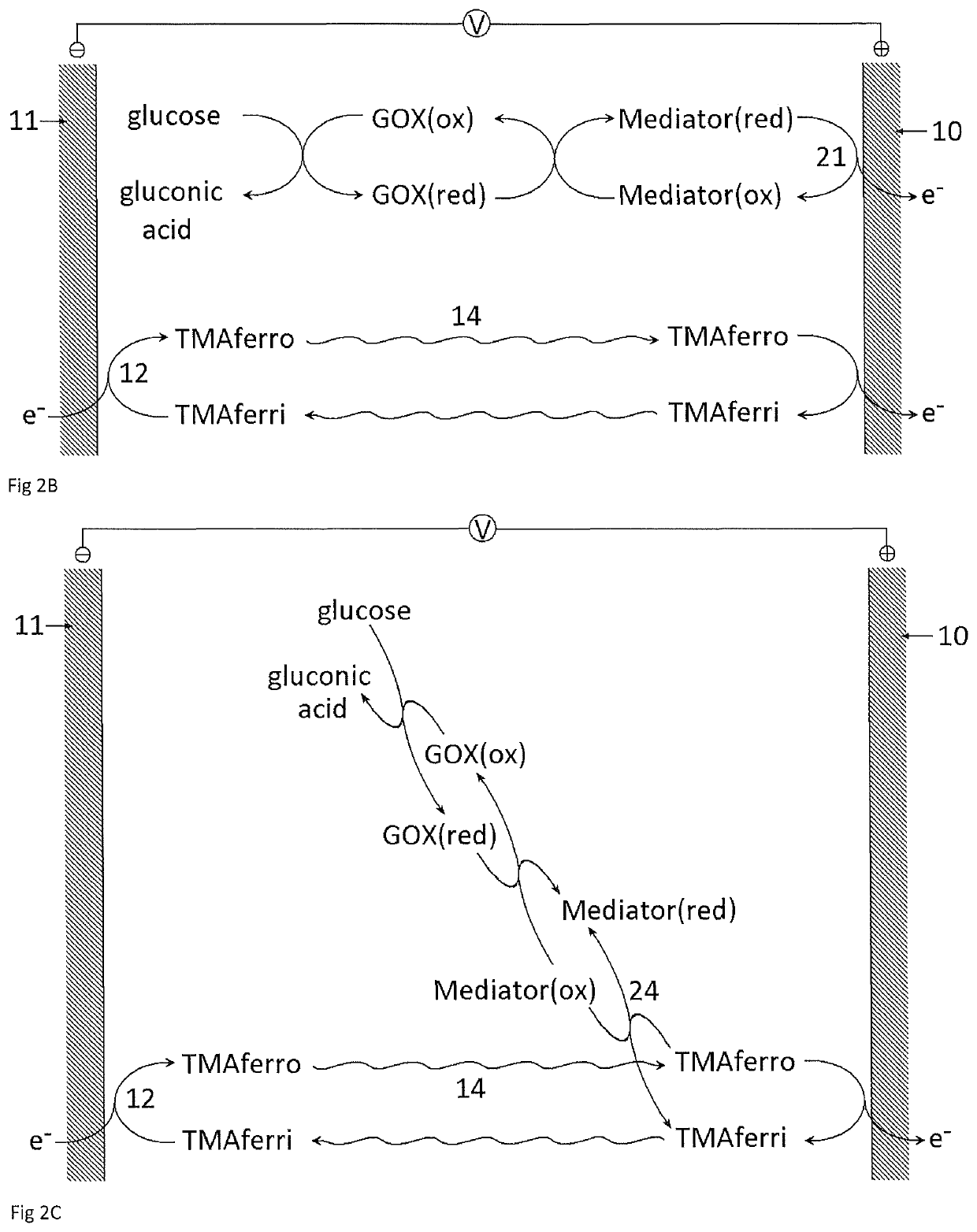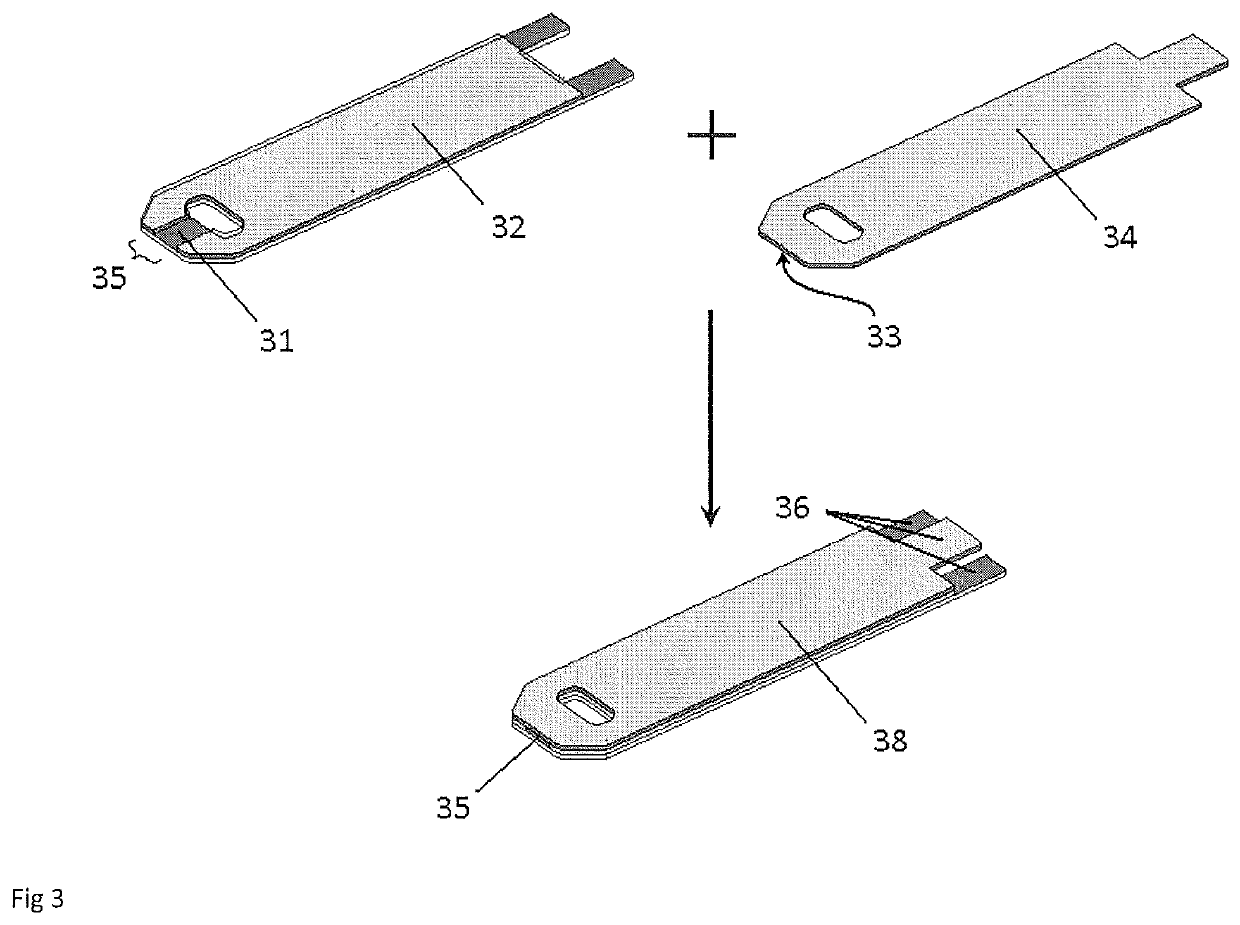Reagents for electrochemical test strips
a technology of electrochemical test strips and reagents, which is applied in the direction of liquid/fluent solid measurements, biomass after-treatment, enzymology, etc., can solve the problems of commercial hampered, unable to meet the needs of enzymology, and the ferrocyanide produced is still susceptible to oxidation by oxygen, so as to reduce the instability of enzymes, reduce the ionic environment, and the effect of simple hydrophilic stabilizers
- Summary
- Abstract
- Description
- Claims
- Application Information
AI Technical Summary
Benefits of technology
Problems solved by technology
Method used
Image
Examples
example 1
Synthesis of Tetramethylammonium Ferricyanide
[0123]Dowex 50WX2-200(H) ion exchange resin was added to DI water and shaken to form a slurry. This slurry was poured into a glass column with a glass porous frit and PTFE stopcock. The column was also wrapped with UV filtering plastic. More slurry was added and the liquid run out until the depth of resin settled out to give a column volume of 58 ml. The column was rinsed with DI water: initially the eluent was orange but rinsing was continued until the eluent ran clear. 20 ml of 1M HCl was added and run through the column: this caused the column volume to shrink to 45 ml. The acid was rinsed out of the column until the pH of the eluent was ˜pH6 (measured on pH paper) by which time the column volume had also restored to 58 ml by swelling of the resin. 25 collection pots were assembled, each with volume >10 ml and each was charged with 400 ul of a 25 wt % solution of tetramethylammonium hydroxide in water. 8 ml of 1M potassium ferricyanide...
example 2
Synthesis of Rubidium Ferricyanide
[0124]The ion-exchange column was prepared as in Example 1 and 20 collection pots with volume between 3-10 ml were prepared, each being charged with 200 ul of a 50 wt % solution of rubidium hydroxide in water. 10 ml of potassium ferricyanide were added and run into the column. The collection of the eluent was performed under fluorescent lights that were fitted with UV-absorbent covers. The eluent collection was started with the first pot and switched to the next pot every time the contents became acidic, monitored by pH paper. The pot solutions were clear and yellow, except when the contents become extremely acidic, in which case they become green. This yellow colour was a paler yellow for the eighteenth pot and by the nineteenth pot the eluent had became paler and paler. Collection was stopped at this point and the acidified contents of all pots were combined; they were then neutralized with more of the 50 wt % solution of rubidium hydroxide in wat...
example 3
Synthesis of Rubidium Ferrocyanide
[0125]The filtrate from Example 2 was mixed with ethanol to generate a 50:50 aqueous ethanol solution, which generated an immediate precipitate of a pale yellow color. Heating this solution to boiling and then slowly allowing the alcohol to distil off gave a clear solution that was allowed to cool slowly overnight to give pale yellow crystals. The crystals were isolated by suction filtration and dried in a vacuum desiccator, to give 1.05 g of rubidium ferrocyanide trihydrate, 1.72 mmoles based on a rmm of 607.87 g / mol and a further 17.2% of the initial ferricyanide recovered.
PUM
| Property | Measurement | Unit |
|---|---|---|
| concentration | aaaaa | aaaaa |
| solubility | aaaaa | aaaaa |
| solubility | aaaaa | aaaaa |
Abstract
Description
Claims
Application Information
 Login to View More
Login to View More - R&D
- Intellectual Property
- Life Sciences
- Materials
- Tech Scout
- Unparalleled Data Quality
- Higher Quality Content
- 60% Fewer Hallucinations
Browse by: Latest US Patents, China's latest patents, Technical Efficacy Thesaurus, Application Domain, Technology Topic, Popular Technical Reports.
© 2025 PatSnap. All rights reserved.Legal|Privacy policy|Modern Slavery Act Transparency Statement|Sitemap|About US| Contact US: help@patsnap.com



